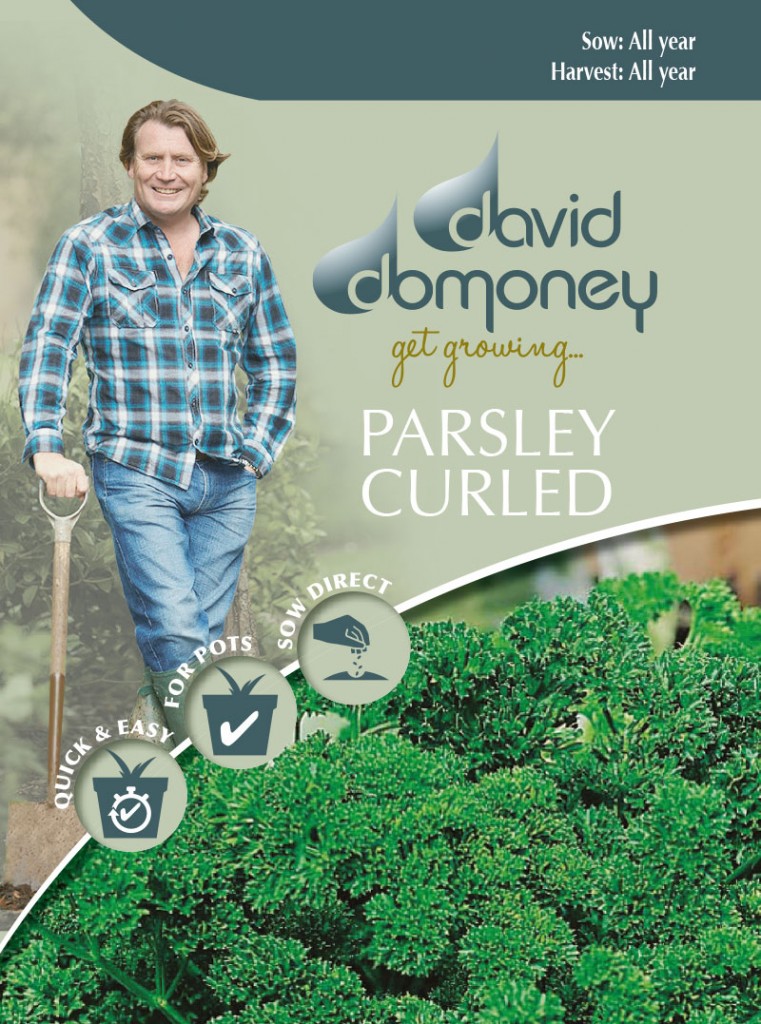Parsley Curled
The well-loved traditional curly parsley to create the classic English garnish. With attractive, richly aromatic leaves that can be used to flavour dressings, soups, sauces, stuffings and all manner of other savoury dishes. Just a few plants in a herb garden can provide plenty of fresh leaves over a really long season. The attractive plants also look great in bedding displays and mixed planters if garden space is limited.
Growing Advice

Sow outdoor March to July. To grow large crops it is best to grow parsley outdoors. Choose a sunny or partially shaded, sheltered location and wait until the soil has warmed up, ideally to around 10°C+. Then sow thinly directly where plants are to grow. Make a shallow trench 1.5cm deep and cover the seeds with fine soil. Sowing in rows 20cm apart will make it easier to identify and remove any weeds that may appear. Keep the soil moist and weed free. Thin out the rows by harvesting the weaker seedlings first, leaving plants to grow on at a final spacing of around 20cm apart. Repeat sowings will ensure a continuous supply throughout the summer. To extend the growing season, early and late sowings are best made under cloches. Once established, a regular liquid feed will help maximise crops.

Top Tips About Seeds
Once the seed packet has been opened, the seeds can be stored in an airtight container until required for further sowings. Parsley seeds are best used fresh so be sure to use them up and start again with a new packet each year.

Plants can also be grown into patio pots or decorative mixed patio containers, where they can be close at hand for use in the kitchen or when eating outdoors. Pots can then also be overwintered in a greenhouse or polytunnel to extend the harvest season.
Occasionally plants can be damaged by carrot or celery fly larvae, try not to leave thinned out seedlings or carrot tops from nearby harvests lying around as these will attract the flies. Weak plants can also be affected by disease, the best way to keep plant strong and healthy is by regular watering. If affected, established plants can be cut right back so new healthy leaves can come through.
Leaves of indoor plants can be cut at any time of year. Regular sowing will provide a plentiful succession of leaves. The leaves of outdoor plant can be picked from May onwards, established, overwintered plants will produce earlier crops. Take a few leaves from each plant so the regrow quickly.

Ideas on how to use your Parsley Curled
Harvest any remaining leaves before the first frost of autumn, these can then be dried or frozen for later use. If you are concerned about creepy crawlies that might by hiding amongst the leaves, put them in a bowl of water and place a smaller bowl over the eaves to weigh them down. Any bugs will soon let go and come to the surface where you can remove them easily

Leave A Comment